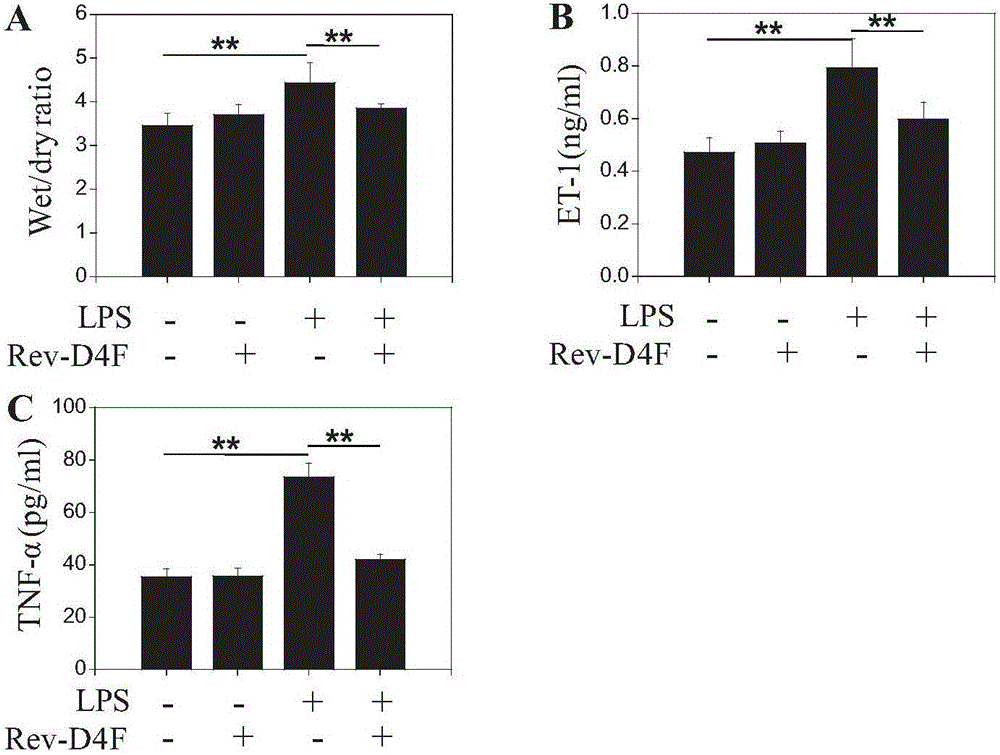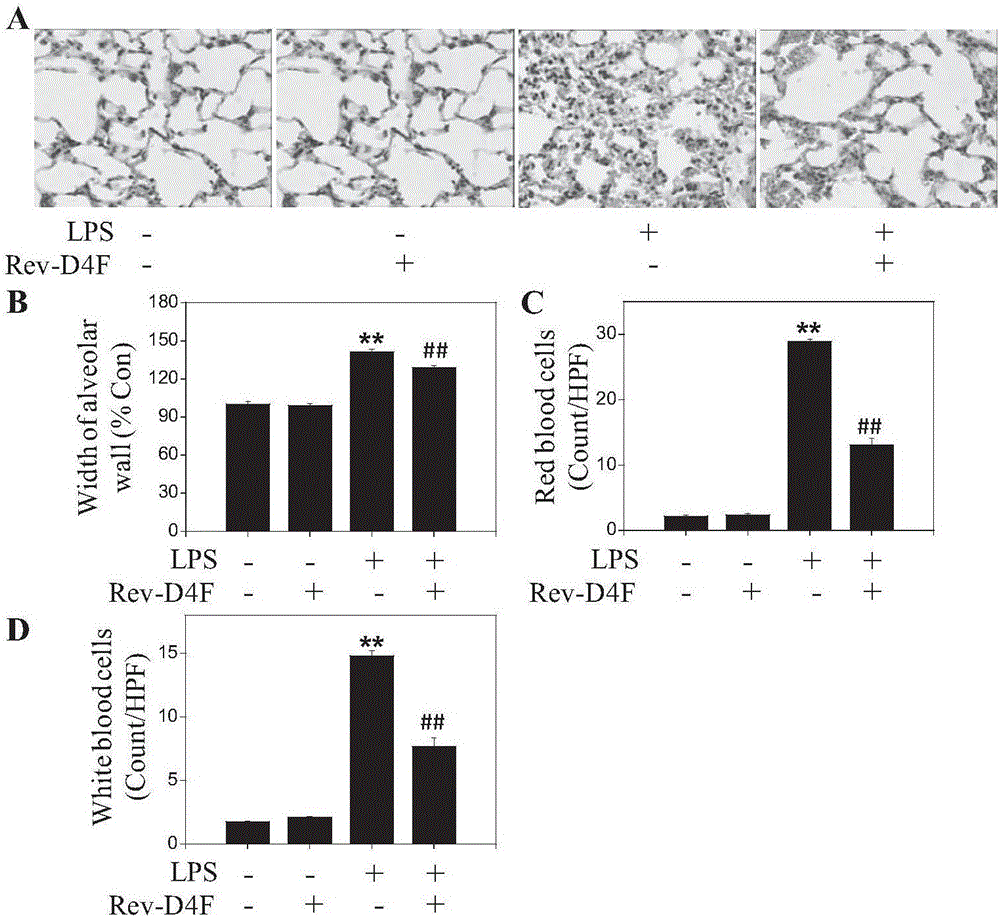Application of high-density protein mimic peptide Reverse-D-4F in preparation of medicines for treating LPS-induced respiratory distress syndrome
A technology of protein simulation and respiratory distress, applied in drug combinations, respiratory diseases, peptide/protein components, etc., can solve the problem of no report on sepsis treatment
- Summary
- Abstract
- Description
- Claims
- Application Information
AI Technical Summary
Problems solved by technology
Method used
Image
Examples
Embodiment Construction
[0019] Reverse-D-4F treats LPS-induced lung injury model in rats.
[0020] Animal ARDS model was established, 24 male C57 mice were divided into 4 groups:
[0021] (1) Control group (intraperitoneal injection of PBS);
[0022] (2) Reverse-D-4F group (intraperitoneal injection of Reverse-D-4F 10mg / Kg)
[0023] (3) Model group (intraperitoneal injection of LPS 10mg / Kg);
[0024] (4) Reverse-D-4F treatment group (intraperitoneal injection of Reverse-D-4F 10mg / Kg and LPS10mg / Kg)
[0025] Two days after the model was made, the left lung was taken by intravenous injection of ketamine hydrochloride under general anesthesia, and the left lung was taken. The surface of the lung tissue was cleaned with absorbent paper. The weight of the left lung was considered as wet weight; the left lung was placed in a dry box at 60°C Dry for 48 hours, and then weigh the dry weight. The wet-dry weight ratio is used to evaluate the degree of pulmonary edema.
[0026] ELISA kit was used to detect the expression ...
PUM
 Login to View More
Login to View More Abstract
Description
Claims
Application Information
 Login to View More
Login to View More - R&D
- Intellectual Property
- Life Sciences
- Materials
- Tech Scout
- Unparalleled Data Quality
- Higher Quality Content
- 60% Fewer Hallucinations
Browse by: Latest US Patents, China's latest patents, Technical Efficacy Thesaurus, Application Domain, Technology Topic, Popular Technical Reports.
© 2025 PatSnap. All rights reserved.Legal|Privacy policy|Modern Slavery Act Transparency Statement|Sitemap|About US| Contact US: help@patsnap.com



